Dow Jones Industrials 9,240, Here We Come
Six charts illustrate a weakening stock market. Nobody knows what will happen in the future, but it's fun to predict anyway. With that caveat: Dow Jones Industrial Average (DJIA) 9,240, Here We Come. That's about a 16% decline from its current level around the psychologically important 11,000 level. What is the basis of my foolhardy prediction of a 16% decline in the stock market?Let's start with a 10-day chart of the DJIA, which clearly shows the Plunge Protection Team's rapid backfilling of any decline. But alas, the downtrend is painfully obvious: If we look at a 5-year chart of the DJIA, we see unmistakable signs of weakness. Despite a nominal new high in November, RSI and MACD are both showing major divergence, declining even as price hit new highs. The bands of support and resistance are clear as well, and the 9,240 target is solidly within the lower band. The resistance-support between 11,000 and 11,300 goes back to 2006 and even earlier to 2001 (not shown). If the DJIA busts through 11,000, it's look out below. As I have noted here numerous times, the US dollar (DXY) and the US stock market have been on a see-saw: when the dollar drops, stocks rise, and vice versa. Here we see the US dollar in a breakout mode, with a bullish cross of the 20-day moving average through the 50-day MA: Though the Volatility Index (VIX) has been muted compared to its rampage higher in the Eursozone Debt Crisis Part 1 in May, we can discern a rising MACD and other evidence that volatility may not stay low. The megaphone pattern suggests an increase in uncertainty as the swings up and down get more violent: the volatility of volatility is rising. The S&P 500 certainly looks like it's traced out a big fat double top, and the indicators are diverging massively from the "happy story" rally. Price won't stay trapped between the 20-day moving average and the 50-day MA for long, and thre probing below the 50-day that occurred yesterday looks like the skirmish line of a full assault. Meanwhile, the QQQQ (ETF of the NASDAQ 100) has more gaps than a 5-year old's front teeth. Bulls may argue that the rally from September 1 is just so powerful and unique that all those pesky gaps around 44 will never be filled, but old-time chartists have seen too many euphoric rallies retrace to fill those multiple gaps left behind to believe the Bull's happy story of a market that will race ever higher even as corporate profits are set to roll over, China is tightening its bubblicious credit expansion and the Eurozone is in a controlled-demolition phase with no Hollywood ending in sight. A return to 44 by the Qs works out to about a 16% decline--a number that aligns rather neatly with the lower band of support on the DJIA (9,240). OK, so maybe the US market will suddenly reverse its polarity and start rising alongside the dollar. Maybe all those divergences will stay divergent. Maybe the VIX will simmer down to complacency again--and maybe lemmings will leap into the air and form a squadron of flying miracles. Anything's possible, but not everything is probable. DISCLOSURE: I am short the market via inverse ETFs and put options. If you would like to post a comment where others can read it, please go toDailyJava.net, (registering only takes a moment), select Of Two Minds-Charles Smith, and then go to The daily topic. To see other readers recent comments, go to New Posts. Of Two Minds is now available via Kindle: Of Two Minds blog-Kindle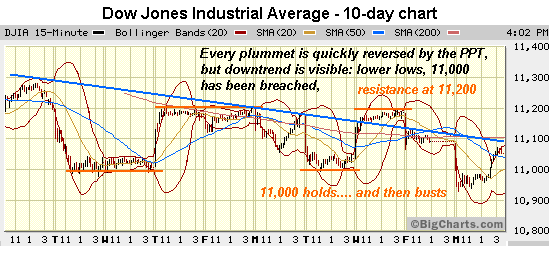
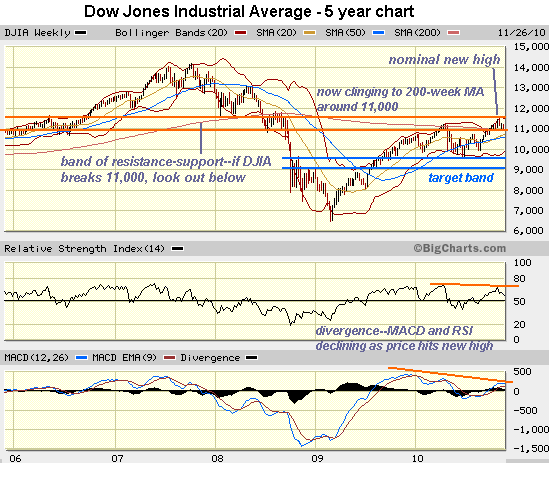
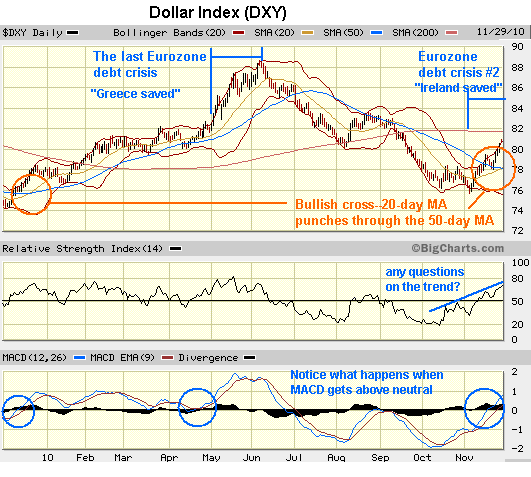
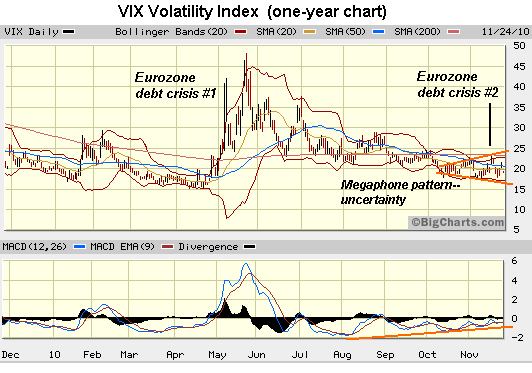
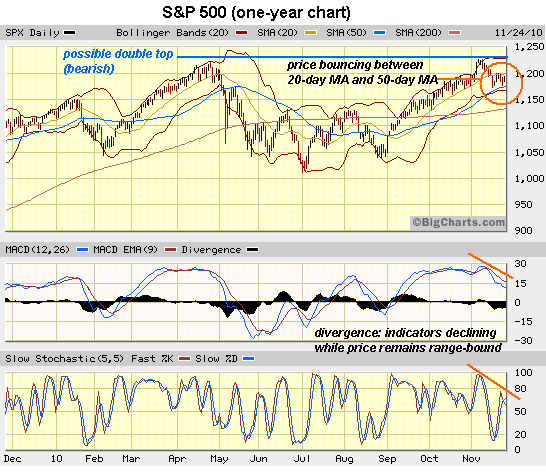
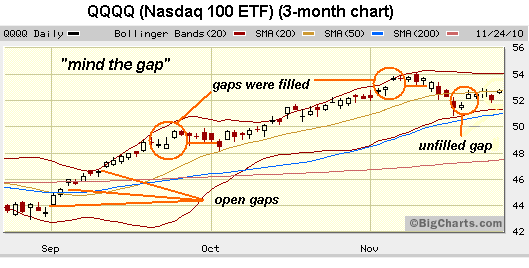
Order Survival+: Structuring Prosperity for Yourself and the Nation and/or Survival+ The Primer from your local bookseller or from amazon.com or in ebook and Kindle formats.A 20% discount is available from the publisher.Thank you, Mark L. ($1.37), for your much-appreciated donation to this site--(cash in any amount is welcomed!) I am honored by your support and readership. Thank you, David K. ($50), for yet another exceptionally generous contribution to this site-- I am greatly honored by your support and readership.























